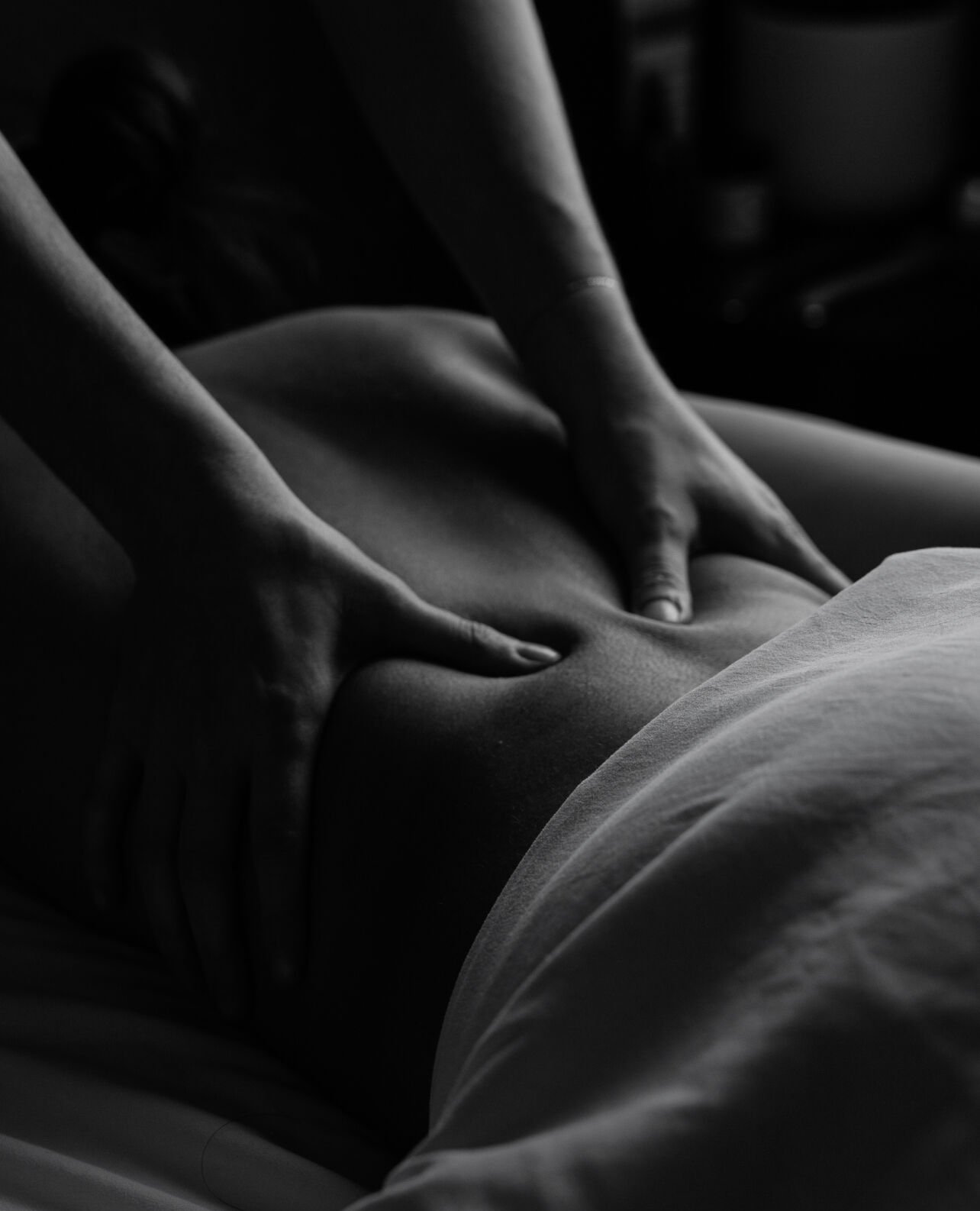
What To Expect
Your Bodywork Incorporates
-
A massage technique that uses slow, firm pressure to release tension in the deepest layers of muscle tissue, tendons, and fascia. Helps to improve blood circulation, which can aid with chronic aches, pain, and stiffness.
-
Ashiatsu (also known as barefoot massage) is a deep tissue technique that uses a therapist's feet and gravity to apply deep pressure to the body. Ashiatsu uses long, gliding strokes along the clients body, which can help improve circulation and range of motion. This technique is great for clients that LOVE extra pressure.
-
Trigger point therapy, also known as myofascial release, is a non-invasive massage technique that involves applying pressure to trigger points in the body to relieve pain and tension
-
Cupping has been around for thousands of years and has its roots in ancient Chinese and Egyptian medicine. Today it is widely used for pain relief and musculoskeletal injuries, such as strains, sprains, back injuries, and inflammation.
-
Lymphatic drainage is a gentle massage technique that helps move lymph fluid through the body to areas with working lymph vessels. It's also known as manual lymphatic drainage (MLD).
-
Helps relieve pain and inflammation by interacting with cannabinoid receptors in the skin, which sends a signal to the endocannabinoid system. Topical CBD may help inflammatory skin disorders, eczema, and contains wound healing properties.
Benefits of Bodywork
-
By separating and loosening muscle fibers, massage can stretch and elongate muscles, which releases tension and allows for more movement. Applying pressure to trigger points can break up adhesions or knotted areas. Also by increasing muscle temperature, certain massage techniques can improve tissue elasticity and reduces restricted movement.
-
Applying pressure to skin and muscle tissue stimulates blood vessels, causing them to dilate and allow more blood to flow through. The pressure also moves blood through congested areas and allows new blood to flow in. The friction created between the skin and fingers also stimulates lymphatic flow.
-
Massage therapy works against inflammation by blunting the production of inflammatory signaling at a cellular level while also promoting the clearance of inflammatory signaling factors such as cytokines from systemic circulation.
-
The pressure and touch of a massage stimulate sensory receptors in the skin and muscles, which send signals to the brain. This triggers the pituitary gland to release endorphins. Kneading during a massage increases blood flow, which can also stimulate the autonomic nervous system to release endorphins.
Massage can also reduce stress hormones like cortisol and adrenaline, which can help endorphins be released. When cortisol levels decrease, serotonin levels increase, which can help with pain, anxiety, and sadness.
-
Bodywork can activate the parasympathetic nervous system (PNS) by stimulating the nerves and sensory receptors in the skin and subcutaneous tissues. This stimulation sends messages to the brain via the spinal cord, which then activates the PNS.
The PNS is part of the autonomic nervous system (ANS) and is often called the "rest and digest" system because it is active when you are relaxed and digesting.
-
Bodywork can increase tissue elasticity and flexibility by warming up muscles and loosening muscle fibers. This can help prevent injuries like pulls and strains.
Bodywork can also help heal injuries by increasing blood flow, which delivers more oxygen and nutrients to damaged tissues and organs. This can help repair damaged tissues and speed up the healing process.
-
Bodywork can stimulate the Vagus nerve, which is the body's main parasympathetic nerve, and tell the body to relax. This can lead to lower heart rate and blood pressure, relaxed facial muscles, and increased gut function.